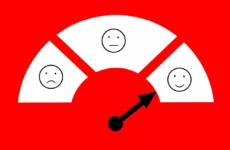Today’s companies have numerous choices for marketing strategies. However, the most important tactics fall into the categories of gathering consumer data and increasing sales. The Net Promoter Score (NPS) is considered one of the leading marketing tools that can help you accomplish both.
Most studies agree that it takes more time, effort, and money to get a new customer to buy something than an existing customer. So why do businesses allot the majority of their resources to acquiring new customers and the smallest portions to retaining their current ones? Until recently, marketers thought buyers’ loyalty and engagement weren’t measurable. Now they are to a higher degree if used properly.
What Is the Net Promoter Score?
The NPS is an online survey tool that measures consumer loyalty to specific companies or brands and evaluates whether those people are inclined to recommend them.
A standard NPS question asks how likely you are to recommend a service or product to friends and colleagues. The answer should be on a scale from 0-10.
By asking the right questions, you enable your company to classify respondents into three groups:
| GROUP | CHARACTERISTICS | SCORE |
| Promoters | Loyal; ready to promote | 9-10 |
| Passives | Loyal; but not enthusiastic | 7-8 |
| Detractors | Unlikely to promote | 0-6 |
The results from the NPS study, not to be confused with a customer satisfaction survey, exhibits a customer’s willingness to recommend you and your product to others, stimulates interest, and motivates action.
How Do You Figure a Net Promoter Score?
It’s easy to calculate the NPS by using this formula:
NPS = % of Promoters – (Minus) the % of Detractors
The score ranges from -100 to +100. A lower score will indicate that the majority of customers are disengaged and not likely to promote your service or product.
What Determines a Good Score?
Keeping records of your NPS scores creates a history by which your company can monitor and contrast the previous years’ results and enables you to set realistic goals for the next year. So what is a good net promoter score? The following NPS global standards provide a metric to quantify your results:
- Any score over 0 is a good score because it shows you have more loyal customers than disloyal.
- A score of +50 is excellent.
- A score of +70 is world-class.
Comparing your company to like businesses in your industry is another key component to measure your outcomes. For reference, Satmetrix is a co-creator of NPS and a source for average NPS scores and competitive benchmarks by industry.
Calculating customer loyalty alone will not be of much help unless you pair the data with customer feedback to gain insights and use those insights to improve customer experience.
What Are the Benefits?
NPS surveys are a powerful tool to gauge the growth potential of your company’s revenue, discover new trends, and gain beneficial insights. Yes, customer acquisition is imperative when you are first starting, and continues after that, but customer retention is the easiest, quickest, and least expensive way to increase sales. Therefore, customer retention should rate at least equal to or higher rate of involvement and resources.
Feedback from responders also gives information regarding shoppers’ interests for new items and for upgrades and improvements to current products and services.
After all, consumer loyalty is priceless.







